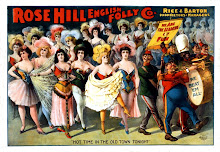 This is a mask I made this past fall, called
This is a mask I made this past fall, called The Peacock!
The Carnival of Venice (in Italian: Carnevale di Venezia) was first recorded in 1268.
Masks have always been a central feature of the Venetian carnival; traditionally people were allowed to wear them between the festival of Santo Stefano (St. Stephen's Day, December 26) at the start of the carnival season and midnight of Shrove Tuesday. They have always been around Venice. As masks were also allowed during Ascension and from October 5 to Christmas, people could spend a large proportion of the year in disguise. Maskmakers (mascherari) enjoyed a special position in society, with their own laws and their own guild.
In 1797, Venice became part of the Austrian-held Kingdom of Lombardy-Venetia when Napoleon signed the Treaty of Campo Formio. The Austrians took control of the city on January 18, 1798 and it fell into a decline which also effectively brought carnival celebrations to a halt for almost two centuries.
Carnival was outlawed by the fascist government in the 1930s. It was not until a modern mask shop was founded in the 1980s that Carnival enjoyed a revival.
Carnival starts around two weeks before Ash Wednesday and ends on Shrove Tuesday (Fat Tuesday or Mardi Gras), the day before Ash Wednesday.
Mask Varieties:
Venetian masks can be made in leather or with the original papier-mâché technique. The original masks were rather simple in design and decoration and often had a symbolic and practical function. Nowadays, most of them are made with the application of gesso and gold leaf and are all hand-painted using natural feathers and gems to decorate.
Bauta
Bauta is a "mask which covers the whole face, with a stubborn chin line, no mouth, and lots of gilding". One may find masks sold as Bautas that cover only the upper part of the face from the forehead to the nose and upper cheeks, thereby concealing identity but enabling the wearer to talk and eat or drink easily. It tends to be the main type of mask worn during the Carnival. It was used also on many other occasions as a device for hiding the wearer's identity and social status. It would permit the wearer to act more freely in cases where he or she wanted to interact with other members of the society outside the bounds of identity and everyday convention. It was thus useful for a variety of purposes, some of them illicit or criminal, others just personal, such as romantic encounters!
Moretta
The moretta is an oval mask of black velvet that was usually worn by women visiting convents. It was invented in France and rapidly became popular in Venice as it brought out the beauty of feminine features. The mask was finished off with a veil.It was secured in place by a small bit in the wearer's mouth.
Larva
The larva, also called the volto mask, is mainly white, and typically Venetian. It is worn with a tricorn and cloak. It is thought the word larva comes from the Latin meaning "mask" or "ghost". Like the bauta, the shape of the mask allowed the bearer to breathe and drink easily, and so there was no need to take it off, thus preserving anonymity. These masks were made of fine wax cloth and so were much lighter and were not irritating to wear making them ideal for eating, dancing and flirting.
 This is a mask I made this past fall, called FiFi!
This is a mask I made this past fall, called FiFi!The Mask-Makers
The mascherari, or mask-makers had their own statute dated 10 April 1436.
They belonged to the fringe of painters and were helped in their task by sign-painters who drew faces onto plaster in a range of different shapes and paying extreme attention to detail.
For more info visit wikipedia!
Other Sites:
http://www.carnivalofvenice.com/
http://www.venetianmasksshop.com/
http://www.visitvenice.co.uk/venice-carnival.html
http://www.meetingvenice.it/en/



.jpg)
















Gorgeous Mask Lisa, just stunning xx
ReplyDeleteThese are stunningly lovely Lisa WOndeful information too I am now educated!
ReplyDelete